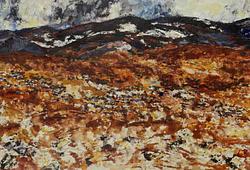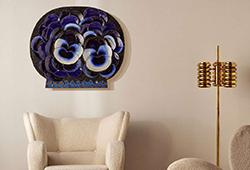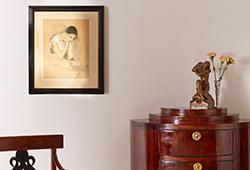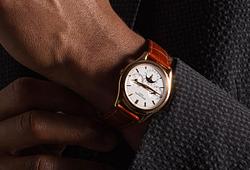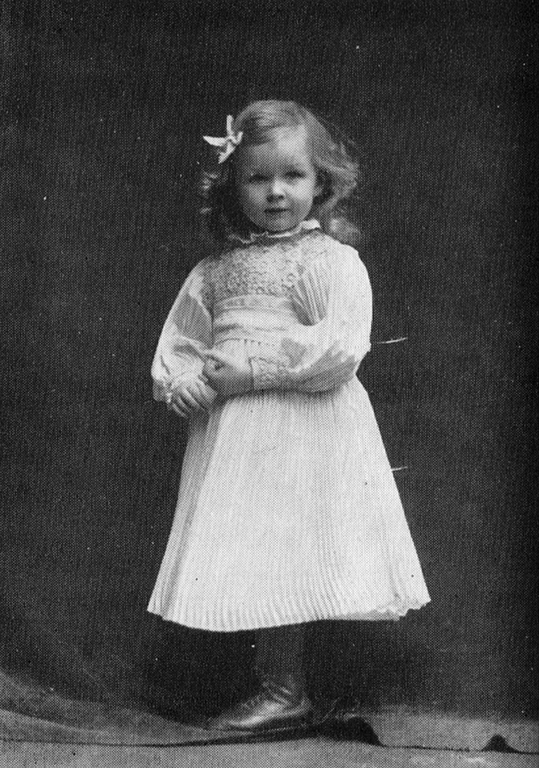Carl Larsson
Portrait of August Strindberg's daughter Anne-Marie.
Signed C.L. and dated 1905 with the dedication "To the friend August Strindberg, his little girl Anne-Marie". Watercolour, charcoal, and pencil on paper, image 63.5 x 47 cm.
Provenance
Sotheby's, London, United Kingdom, "19th and 20th Century Scandinavian Paintings, Watercolours and Sculpture", 27 March, 1990, lot 41.
Sothebys, London, Great Britain, "19th Century European Paintings", 3 June, 2003, lot 204.
Exhibitions
Konstnärshuset, Stockholm, "Carl Larsson. Separatutställning", September 1906, cat. no 66.
Literature
Ulwa Neergaard, "Carl Larsson, signerat med pensel och penna", 1999, illustrated p. 355 and listed in catalogue supplement, under the year 1905 p. 105, cat. no 1174.
More information
Anne-Marie Hagelin (1902 - 2007) was August Strindberg's youngest daughter from his marriage to actress Harriet Bosse. Although the marriage was short-lived, Bosse and Strindberg managed to stay in touch. Practically, they shared custody of their daughter Anne-Marie, which was as radical for its time as the fact that they lived separately for a period. Strindberg scholar Björn Meidal, in his book "The Story of August Strindberg, Harriet Bosse, and their daughter Anne-Marie," has recounted the history of Strindberg's last marriage and his tender relationship with his youngest daughter. He spoiled Anne-Marie with paint boxes and dolls but also wanted her to become a "spirited girl." Besides bows and arrows, fishing rods, and various fishing gear, he tried to pass on his interest in pyrotechnics to his daughter. In their preserved correspondence, he constantly asked if his gifts of firecrackers and fireworks pleased her.
August Strindberg and Carl Larsson had a long and complicated friendship. They moved around the world and were often far from each other but kept in touch through letters. Björn Meidal has compiled and commented on this extensive correspondence in his book "Dear Strix! Brother Lars!" They struggled with their lives and challenging creativity, in Paris and Lund, on Kymmendö and in Grez, in Sundborn and Stockholm and Furusund. Through both success and adversity, they maintained their contact, shared their worries, and comforted each other. Alternately, they scolded and congratulated each other, became proper enemies, and became friends again
Photo: Anne-Marie Strindberg, 1905, unknown studio photographer - from Paulson, Arvid (ed. and translated, 1959). Letters of Strindberg to Harriet Bosse. New York: Thomas Nelson and Sons.
Artist
Carl Larsson is considered one of the greatest Swedish artists of all time. He was born in Gamla Stan in Stockholm and studied at the Royal Academy of Arts in the years 1866-76. After his studies in Stockholm, he traveled to France and settled in Grèz-sur-Loing. There he mainly painted garden motifs. In France, he met his future wife Karin Bergöö, who was also an artist and came to mean a lot for his artistry. Already during his student years, he made a living as a photo retoucher and cartoonist in the press. It was also during his studies that Larsson got to know Anders Zorn and Bruno Liljefors, together the three are usually called the ABC artists. At the end of the 1880s, Carl and Karin were given "Lilla Hyttnäs" in Sundborn outside Falun by Karin's father, and this is where Larsson's most famous watercolors depicting his family were created. The motifs often depict sunny landscapes with children, crayfish fishing, meals in the green and interior scenes. Larsson is represented, among other, in the National Museum, where "Gustav Vasas intåg i Stockholm" and "Midvinterblot" fills the stairwell. Represented mainly at the National Museum in Stockholm and at the Gothenburg Art Museum.
Read more






